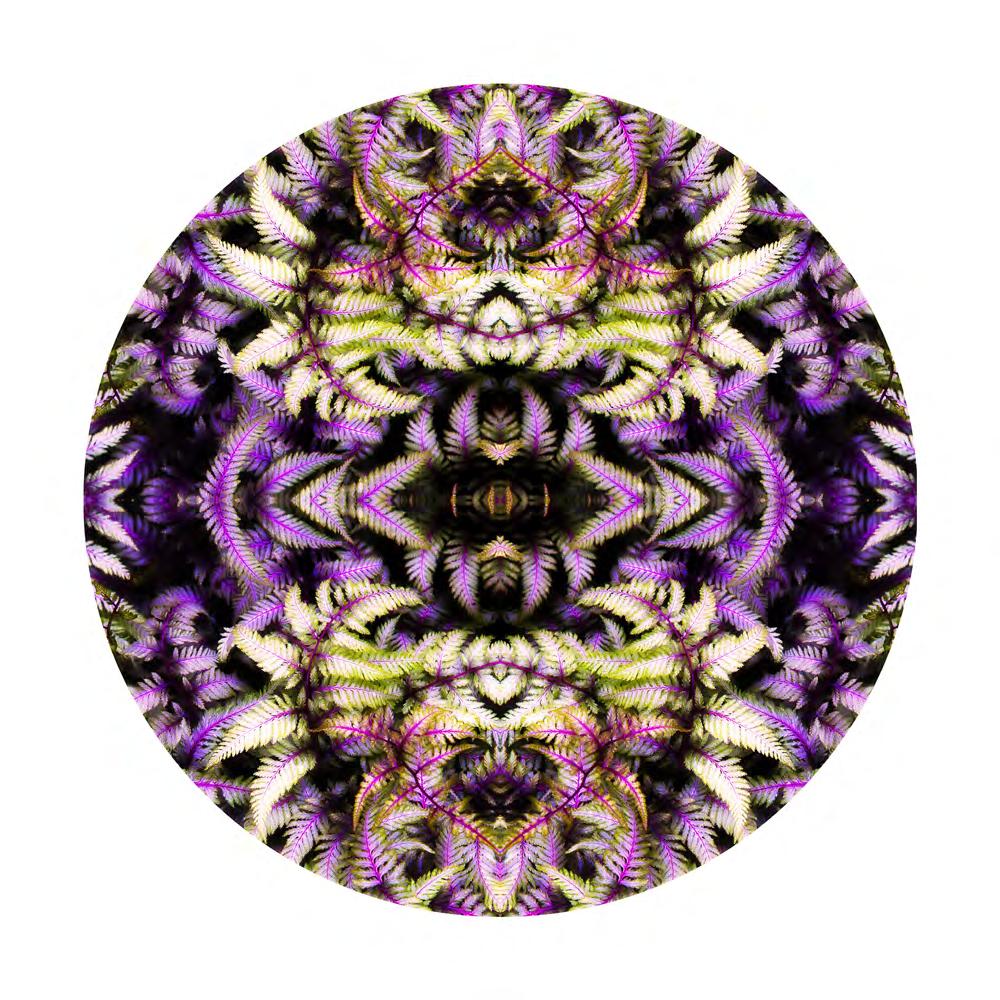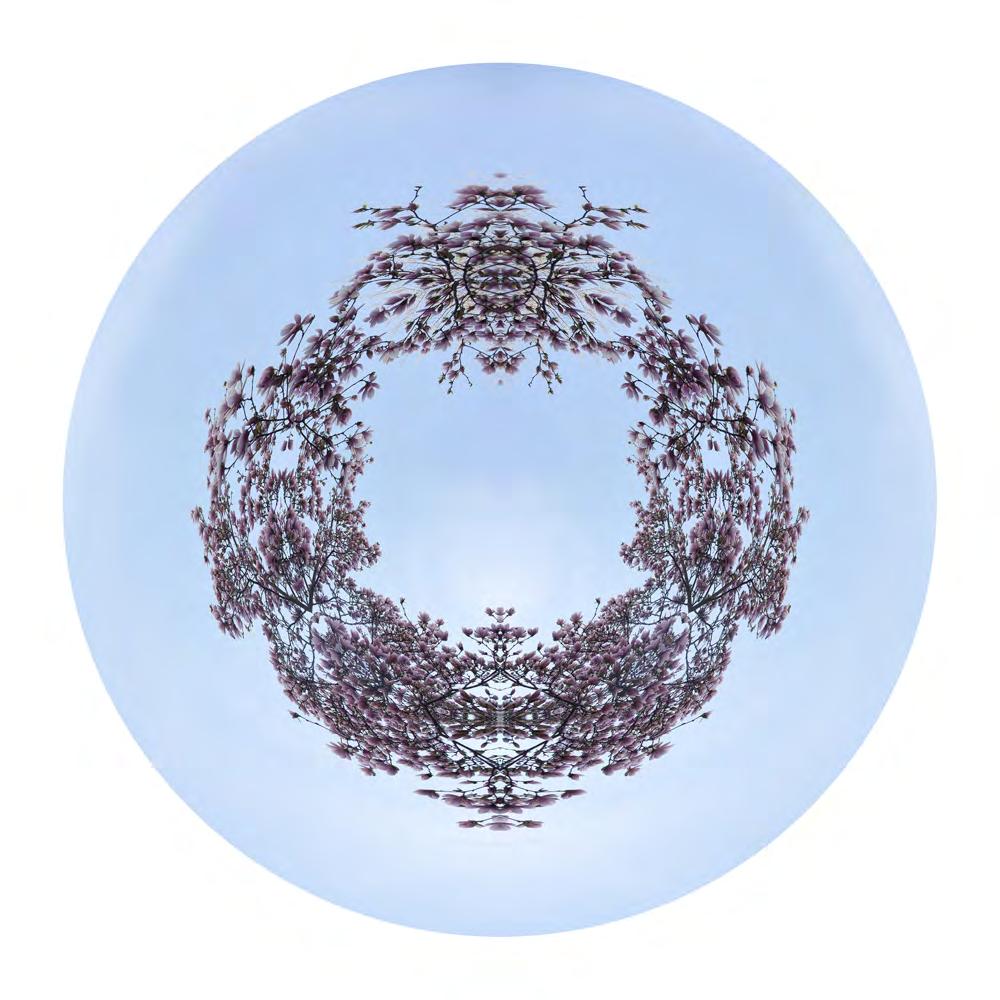
7 minute read
Thomas Brasch photography peers into the divine
Thomas Brasch is a dedicated teacher and photographer who is completely self-taught. This has not stopped him from showcasing his works at exhibits in North America. Seeing photography as being both an art and a science, he blends his multidisciplinary background across the sciences and arts in his photographic pursuits. Taking a look at his pieces here, mandala-like geometric visuals are common themes, but with deep, symbolic meanings.

Advertisement
Above, from top to bottom: Espiritus,2020, from the series Enlightenment. Limited edition archival pigment print at 40x40 and 24x24 inches. Illuminoso, 2020, from the series Enlightenment. Limited edition archival pigment print at 40x40 and 24x24 inches. © Thomas Brasch. All rights reserved.
Q & A - Thomas Brasch
Out of your diverse background spanning science, languages, education and business, what led you to pursue photography?
Photography has always been an influential part of my life. My father, my paternal grandmother, as well as my maternal great uncle, were all photographers. They documented by taking pictures of events and places. Naturally, my curiosity started at a young age and my first camera was a Diana which is now used commonly for Lomography.
After starting my full-time job as a teacher, I picked up photography as an outlet for relaxation. This gave me the ability to explore the world and capture images. My interest was so strong that I was able to teach photography and darkroom techniques to my students, without any formal study or credentials. Unlike my relatives, even though there is a documentation component to my work, I wanted to pursue art photography.
The heart and soul of photography is a fusion of art and science. There is the art of creating or capturing the final image. There is also now an art form in extracting the final image in producing analogue images.
Below: Untitled 41, 2021, from the series Oculus Limited edition archival pigment print at 40x40 and 24x24 inches. © Thomas Brasch. All rights reserved

Nevertheless, science is at the base of this art. Physics is needed for optics. Mathematics is required to quantify the right amount of light in conjunction with depth of field. Chemistry in the darkroom or computer applications in the virtual darkroom help to create the printed image.
Languages and business background have helped me to communicate about my work (in more than one language) as well as promote my work to find my niche audience.
Through the lens of your camera, how do you successfully turn the real into the surreal?
When and where does the creative process begin? A good question. At what point do you start measuring working time? I believe that the creative process begins with daily observation and awareness of the world around us and the personal history we have experienced.
My interests seem eclectic but are perfectly harmonious and all play a part in the creative process. I’m drawn to textures and patterns. Language, as well as mathematics, are patterns. Biology is replete with textures starting at the sub-cellular letter and moving up to biomes.
I am constantly scouting for potential images, capturing and cataloguing. For my current seven bodies of work, my image library
consists of 88,000 files. After editing and curating, looking for the correct source image, I spend hours and sometimes days on the computer experimenting, playing and tweaking. Often, I may go back days or weeks later to tweak the image.
During a computer session, the basic process involves making multiple copies of the base image from front to back and then subsequently wrapping it into a circle to create the kaleidoscopic or mandala effect. My Oculus series images are representational and do not require extensive layering and manipulations. Enlightenment involves much more work. I need to develop a concept that often involves a sketch on paper. The final image is composed of many components which need to be strategically placed to express the concept in an aesthetic lens-based graphic. Regardless, the final image must truly project a glowing iridescence.
Additional information can be found in a blog I just published on my site: But is it photography? You can access it at https://thomasbrasch.com/narratives
What were the inspirations behind your Oculus and Enlightenment Series?
Most of my photography is a visceral reaction to my internal and external environment. In all my works, the basic mandala structure and geometry provide a therapeutic component. Emotions, through visual aesthetics, help us to interpret the world we live in. Oculus and Enlightenment are opposites in the spectrum of my work.

The Oculus images are representational. The motif is nature. In Untitled 02, the wreath of magnolia branches floating in a pale blue sky defy gravity and represent freedom from earthly concerns. The natural fractals in plant growth and symmetry in Untitled 41 draw the viewer into a comforting meditative state.
Enlightenment has an ambitious goal. It speaks to the metaphysics of consciousness, discovery and invention. As we seek knowledge and put into practice what we have learned, we improve the human condition. Illuminoso, an image of a portico from Europe’s oldest universities in Bologna, symbolizes a repository of centuries of exploration and learning. The eye motif is indicative of insight.
Espiritus from Seville exemplifies a time when Christian, Muslim and Jewish cultures and sciences presumably united in harmony, during the Convivencia (8th - 15th Centuries). Moudrost (Wisdom) is taken from the Spanish Synagogue in Prague, a reform temple built in the Moorish Revival style. Now as a museum, it stores highlights of notable advancements in arts and sciences attributed to middle-European Jews from Freud to Mahler.
The concentric circles represent the multiple layers in the Judaic experience: faith, advancement in knowledge, and individual contributions.
Above: Untitled 02, 2014, from the series Oculus. Limited edition archival pigment print at 40x40 and 24x24 inches. © Thomas Brasch. All rights reserved.
Please tell us about your recent and upcoming exhibitions and whether the pandemic has affected these events.
The pandemic has been a blessing and a curse. Naturally, the art world ground to a halt. Museums and galleries and art shows were closed. There were few opportunities to exhibit. However, with this hard-reset, I’ve been able to create a lot of new work in all five of my current series.
The pandemic has also given me more time to reflect and redirect. In this new situation, we expect to have gallery viewings by invitation only and virtual galleries. From May 15 to June 28, 2021, I will have my second CONTACT Photography Festival solo show here in Toronto. I am including a virtual component where viewers can attend the gallery from the comfort and safety of their own homes. This also allows me to invite many people overseas who wouldn’t normally be able to attend due to distance. Furthermore, I can use this tool to find my niche with audiences worldwide.
The name of the show is Post Tenebras Lux (Latin for “After darkness, there is light”) and it will contain new work from both Out of the Darkness and Enlightenment. The themes from the latter are a reaction to those in the former.
Out of the Darkness is a commemorative series that documents and explores how humanity heals from acts of senseless violence. Enlightenment documents humanity’s achievements and progression from ignorance to awareness and civility.
Final thoughts
Thomas Brasch takes an experimental approach in his photography, producing vibrant visuals that are symbolic in meaning and reminiscent of styles seen in historical examples of sacred geometry.
Additionally, the running theme of concentric circles reflect knowledge, contribution and faith. These same themes are echoed in his educational efforts in which he shares his broad knowledge of photography skills.
Artist Bio
Thomas Brasch has devoted thirty years to education. Completely self-taught in photography, he is able to showcase his perceptions of beauty, turning the real into surreal.
He has had several solo shows in Toronto and a number of group shows in North America.
With a background in sciences, languages, education, and business, he is able to blend the skills he acquired and apply them to his career as an art photographer.
Links
Website: https://thomasbrasch.com/
Instagram: @thomasbrasch
Linktr: https://linktr.ee/thomasbrasch
Email: brasch.photo.art@gmail.com







